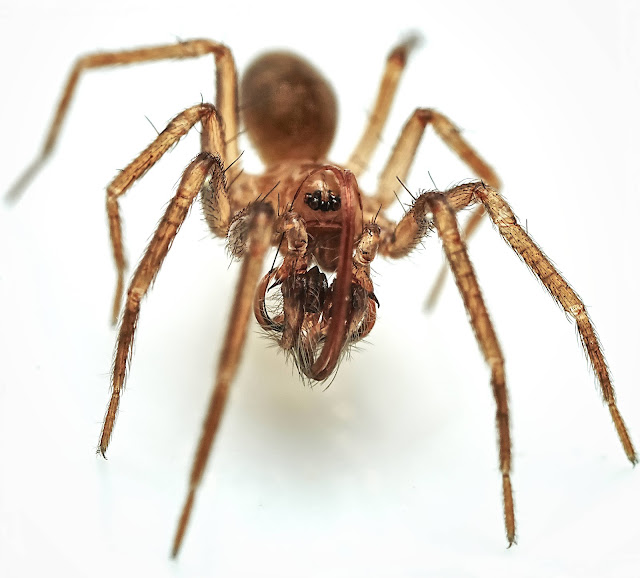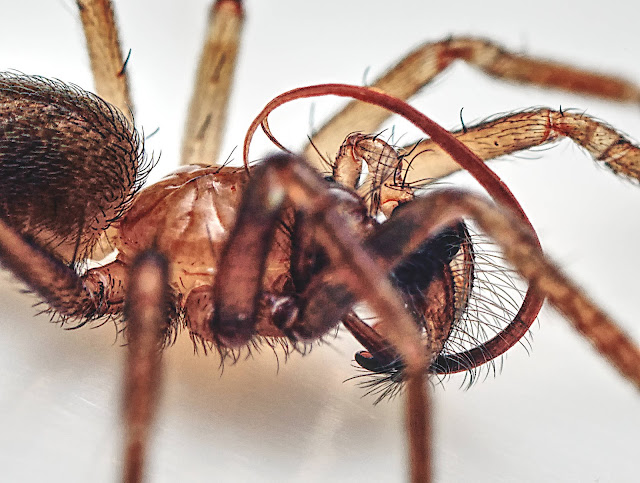Quiz time! Which species of spider is this the natural habitat of?
One of them is Textrix denticulata, not particularly common in Leicestershire:In January I was asked by the Charnwood Forest Landscape Partnership scheme if I could help refind the "Charnwood Spider", Mastigusa macrophthalma. This species was last recorded in Leicestershire 20 years ago, and on Charnwood 21 years ago. Rashly, I said yes, but bearing in mind some good arachnologists have been surveying on Charnwood in recent years, privately I had my doubts. For various reasons, I haven't been able to do much fieldwork yet this year, but recently I was able to revisit one of the last known Charwood sites for the species.
Success :-)
The other interesting thing about this record is that the spider was associating with Formica lemani (thanks to Gavin Gamble and Matt Hamer for the ID) under the rock, which I have not seen listed as a known associate for this species elsewhere:
I'm delighted to have been able to see and photograph this magnificant spider (now back under its home rock after a few photographs). However, I do worry a lot about the amount of disturbance and pressure on the site. My next move, having got my eye in, is to try and find new sites for the species, clinging to its ancient Charnwood home by its teeny tiny claws.







